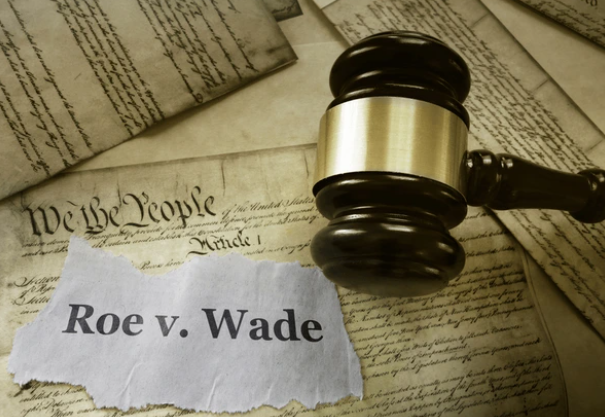Introduction to Roe v. Wade
The Supreme Court’s Roe v. Wade Decision in 1973 was a landmark ruling that reshaped the legal landscape of abortion rights in the United States. This decision recognized women’s constitutional right to privacy, thereby legalizing abortion nationwide. Understanding the context, impact, and subsequent legal challenges of this decision is crucial to comprehending its significance in American legal and social history.
Roe v. Wade not only ignited passionate debates between pro-choice and pro-life movements but also influenced numerous legal precedents and state laws. By exploring the key aspects of this ruling, we can better appreciate its profound impact on American society and its legal system.
Impact of Roe v. Wade on Abortion Rights
The impact of Roe v. Wade on abortion rights was immediate and far-reaching. The decision fundamentally altered the legal status of abortion in the United States by invalidating many state laws that restricted or banned abortions. The Supreme Court’s ruling was based on the right to privacy, which it found to be “broad enough to encompass a woman’s decision whether or not to terminate her pregnancy.”
This landmark decision empowered women with the autonomy to make decisions about their own bodies without excessive government interference. It also set a legal precedent that would influence future cases related to reproductive rights and personal privacy. The recognition of abortion as a constitutional right marked a significant shift in the landscape of women’s health and reproductive freedom.
The Right to Privacy
At the core of the Roe v. Wade decision was the recognition of the right to privacy. The Supreme Court found that this right, though not explicitly mentioned in the Constitution, was implied in the penumbras of other constitutional protections. This interpretation provided a broad shield for individual autonomy, including decisions about one’s body and reproductive health.
The Court’s recognition of a woman’s right to privacy in making medical decisions was groundbreaking. It established a legal framework that limited the government’s ability to interfere in private medical decisions, which had implications far beyond the issue of abortion. This interpretation of the right to privacy has since been cited in various cases involving personal freedoms.
Shifts in Public Opinion
The Roe v. Wade decision significantly impacted public opinion regarding abortion rights. Initially, the decision was met with a mixed response, with strong support from women’s rights advocates and equally strong opposition from pro-life groups. Over time, the public discourse surrounding abortion has evolved, reflecting broader social and cultural shifts.
Polling data over the decades has shown fluctuating levels of support for abortion rights, often influenced by political, religious, and generational factors. The decision has remained a polarizing issue in American politics, with debates intensifying during election cycles and judicial appointments.
Supreme Court Decision Roe v. Wade Summary
In summary, the Supreme Court decision Roe v. Wade declared that a woman’s right to an abortion fell within the right to privacy protected by the Fourteenth Amendment. The case was brought by “Jane Roe,” a pseudonym for Norma McCorvey, who challenged the Texas laws criminalizing most abortions.
The Court, in a 7-2 decision, held that the state’s interest in regulating abortions must be balanced against a woman’s right to privacy. The ruling established a trimester framework to guide the permissible levels of state regulation: during the first trimester, the government could not prohibit abortions at all; during the second trimester, the government could require reasonable health regulations; and during the third trimester, once the fetus reached the point of “viability,” the state could prohibit abortions except when necessary to protect the mother’s life or health.
The Trimester Framework
The trimester framework established by Roe v. Wade was a key component of the decision. This structure allowed for different levels of state regulation depending on the stage of pregnancy. During the first trimester, the decision to terminate a pregnancy was left entirely to the woman and her physician. In the second trimester, the state could impose regulations related to maternal health. By the third trimester, when the fetus could potentially survive outside the womb, the state’s interest in protecting potential life could outweigh the woman’s privacy rights, allowing for abortion restrictions.
This framework provided a balanced approach to the complex issue of abortion, acknowledging both the woman’s rights and the state’s interest in potential life. It served as a guideline for subsequent legal interpretations and state laws concerning abortion regulation.
Legal Reasoning Behind the Decision
The legal reasoning behind Roe v. Wade was deeply rooted in the concept of personal liberty and privacy. The majority opinion, written by Justice Harry Blackmun, argued that the right to privacy, though not explicitly mentioned in the Constitution, is protected by the Due Process Clause of the Fourteenth Amendment. This right to privacy was deemed broad enough to encompass a woman’s decision to terminate her pregnancy.
Justice Blackmun’s opinion emphasized the importance of balancing the state’s interests in regulating abortions and protecting potential life with the rights of women to make autonomous medical decisions. This nuanced approach sought to respect the complex moral, medical, and legal dimensions of abortion, providing a legal framework that could adapt to evolving societal values and medical advancements.
Roe v. Wade Legal Implications
The legal implications of Roe v. Wade extended beyond the immediate issue of abortion. The decision affirmed the principle that the Constitution protects a broad right to privacy, which includes a woman’s right to choose to have an abortion. This broad interpretation of privacy rights has influenced a wide range of legal issues, from contraception access to same-sex marriage.
Moreover, Roe v. Wade set a precedent for judicial review of state laws that potentially infringe on personal freedoms. It established a legal basis for challenging laws that could be seen as overreaching into the private lives of individuals. This aspect of the ruling has been pivotal in numerous cases concerning civil liberties and personal autonomy.
Challenges and Controversies
Since its ruling, Roe v. Wade has faced numerous legal challenges and controversies. Many states have attempted to impose restrictions on abortion, testing the limits of the decision. These challenges have led to a series of Supreme Court cases that have refined and, in some cases, limited the scope of Roe v. Wade.
The decision has also sparked an ongoing national debate, with strong opinions on both sides of the issue. The pro-life movement, in particular, has been vocal in its opposition, seeking to overturn or undermine the ruling through legislative and judicial means. Despite these challenges, Roe v. Wade remains a foundational case in American constitutional law, continuing to shape the discourse on reproductive rights.
Notable Supreme Court Cases Post-Roe v. Wade
Several Supreme Court cases following Roe v. Wade have further defined and challenged the parameters of abortion rights. Some of the most notable include:
- Planned Parenthood v. Casey (1992): This case reaffirmed the core holding of Roe v. Wade but allowed for greater state regulation of abortion. The Court replaced the trimester framework with the undue burden standard, permitting states to impose restrictions as long as they do not place a substantial obstacle in the path of a woman seeking an abortion.
- Gonzales v. Carhart (2007): This case upheld the Partial-Birth Abortion Ban Act of 2003, marking the first time the Court upheld a ban on a specific abortion procedure without an exception for the health of the mother.
- Whole Woman’s Health v. Hellerstedt (2016): The Court struck down Texas laws requiring abortion providers to have admitting privileges at nearby hospitals and clinics to meet ambulatory surgical center standards, ruling that these requirements placed an undue burden on women seeking abortions.
How Roe v. Wade Changed Abortion Laws
The Supreme Court decision Roe v. Wade fundamentally changed abortion laws in the United States. Prior to this landmark ruling, abortion laws varied significantly from state to state, with many states having stringent restrictions or outright bans. The decision created a uniform standard that protected a woman’s right to choose an abortion, drastically altering the legal landscape.
Pre-Roe v. Wade Abortion Laws
Before Roe v. Wade, the legal status of abortion in the United States was highly fragmented. Some states, like New York and California, had more liberal laws allowing abortions under certain circumstances, while others, like Texas, had stringent restrictions that only permitted abortions when necessary to save the mother’s life.
The variability in state laws led to significant disparities in access to abortion services. Women in states with restrictive laws often had to travel long distances to obtain a safe and legal abortion, if they could afford to do so. This patchwork of laws created significant barriers for many women, particularly those from low-income backgrounds.
Post-Roe v. Wade Legal Landscape
Roe v. Wade established a federal standard that superseded conflicting state laws, ensuring that women across the United States had access to legal abortions. This decision struck down many existing state laws that restricted abortion, providing a consistent legal framework that emphasized the right to privacy.
The ruling also prompted states to revise their abortion laws to align with the new federal standard. Some states enacted laws that closely mirrored the framework established by Roe v. Wade, while others sought to test the limits of the ruling by imposing new regulations. The post-Roe legal landscape has been characterized by ongoing legal battles as states and advocacy groups continue to challenge and defend abortion rights.
Supreme Court Justices’ Opinions on Roe v. Wade
The opinions of the Supreme Court Justices on Roe v. Wade have been diverse and have evolved over time. The original decision was delivered by a 7-2 majority, but the opinions within the Court reflected a range of views on the constitutional basis and implications of the ruling.
Majority Opinion
The majority opinion, written by Justice Harry Blackmun, was joined by Justices Burger, Douglas, Brennan, Stewart, Marshall, and Powell. Justice Blackmun’s opinion emphasized the right to privacy and its application to a woman’s decision to terminate a pregnancy. He articulated the trimester framework, balancing the state’s interests with the woman’s rights.
Justice Blackmun’s detailed opinion provided a comprehensive legal rationale for the decision, drawing on historical, medical, and legal precedents. His reasoning underscored the importance of protecting individual autonomy and privacy in matters of reproductive health.
Concurring Opinions
Several Justices wrote concurring opinions, agreeing with the overall decision but providing additional perspectives. For example, Justice Potter Stewart wrote a concurrence emphasizing the importance of the right to privacy and the need for judicial protection of fundamental rights.
Justice William O. Douglas also concurred, focusing on the broader implications of the right to privacy and its roots in constitutional protections. His opinion highlighted the historical evolution of privacy rights and their relevance to modern legal challenges.
Dissenting Opinions
The dissenting opinions were written by Justices Byron White and William Rehnquist. Justice White argued that the decision represented an overreach of judicial power, asserting that the issue of abortion should be left to the states and the democratic process. He believed that the Court had created a new constitutional right without sufficient grounding in the text of the Constitution.
Justice Rehnquist’s dissent focused on the historical context of the Fourteenth Amendment, arguing that the framers did not intend for it to protect a right to abortion. He expressed concern about the broad implications of the ruling for state sovereignty and legislative authority.
Historical Context of Roe v. Wade Decision
The historical context of the Roe v. Wade decision is essential to understanding its significance. The case was decided during a period of significant social and political change in the United States, with evolving attitudes towards women’s rights, privacy, and medical ethics.
The Women’s Rights Movement
The decision came at a time when the women’s rights movement was gaining momentum. Advocates for women’s rights were pushing for greater autonomy and equality in various aspects of life, including reproductive health. The right to choose an abortion was seen as a fundamental aspect of women’s control over their own bodies and lives.
Organizations like the National Organization for Women (NOW) played a crucial role in advocating for reproductive rights and supporting legal challenges to restrictive abortion laws. The broader movement for gender equality provided a supportive backdrop for the arguments made in Roe v. Wade.
Read: American Revolutionary War
Medical Advancements and Ethical Debates
Advancements in medical technology and changes in ethical perspectives also influenced the context of the Roe v. Wade decision. The development of safer abortion procedures and the growing acceptance of family planning contributed to the changing attitudes towards abortion.
Ethical debates about the beginning of life, the rights of the fetus, and the autonomy of women were central to the discussions leading up to the decision. These debates were reflected in the arguments presented to the Supreme Court and the Court’s subsequent reasoning.
Legal Challenges to Roe v. Wade Over the Years
Since its ruling, Roe v. Wade has been the subject of numerous legal challenges. States have sought to impose various restrictions on abortion, leading to a series of Supreme Court cases that have tested the limits of the original decision. These cases have shaped the evolving legal landscape of abortion rights in the United States.
Planned Parenthood v. Casey (1992)
One of the most significant cases post-Roe was Planned Parenthood v. Casey. This case reaffirmed the core holding of Roe v. Wade but introduced the undue burden standard, allowing for greater state regulation of abortion. The Court ruled that states could impose restrictions on abortion as long as they did not place a substantial obstacle in the path of a woman seeking an abortion.
This decision modified the trimester framework established by Roe, allowing for more state involvement in the regulation of abortion throughout pregnancy. The undue burden standard has been a key criterion in subsequent legal challenges and has shaped the way courts evaluate abortion restrictions.
Gonzales v. Carhart (2007)
In Gonzales v. Carhart, the Supreme Court upheld the Partial-Birth Abortion Ban Act of 2003. This ruling marked a departure from previous decisions by upholding a ban on a specific abortion procedure without including an exception for the health of the mother. The decision was seen as a significant victory for the pro-life movement and a limitation on the scope of Roe v. Wade.
The ruling in Gonzales v. Carhart highlighted the Court’s willingness to allow certain types of abortion restrictions, even when they might impact women’s health. It underscored the ongoing legal and ethical debates surrounding abortion procedures and the extent of state regulation.
Whole Woman’s Health v. Hellerstedt (2016)
Whole Woman’s Health v. Hellerstedt was another critical case in the ongoing legal battles over abortion rights. The Supreme Court struck down Texas laws requiring abortion providers to have admitting privileges at nearby hospitals and clinics to meet ambulatory surgical center standards. The Court ruled that these requirements placed an undue burden on women seeking abortions.
This decision reinforced the undue burden standard and emphasized the need for state regulations to be based on evidence that they genuinely protect women’s health. The ruling was a significant affirmation of abortion rights and a setback for states attempting to impose restrictive regulations.
Roe v. Wade Decision and Privacy Rights
The Roe v. Wade decision and privacy rights are deeply intertwined. The ruling was based on the constitutional right to privacy, which the Supreme Court found to encompass a woman’s decision to have an abortion. This interpretation of privacy rights has had far-reaching implications for American jurisprudence.
The Constitutional Right to Privacy
The right to privacy, though not explicitly mentioned in the Constitution, has been inferred from various amendments, including the First, Fourth, Fifth, Ninth, and Fourteenth Amendments. The concept of privacy as a constitutional right was first articulated in cases like Griswold v. Connecticut (1965), which struck down laws banning the use of contraceptives by married couples.
Roe v. Wade expanded this concept, applying it to a woman’s right to make decisions about her own body and reproductive health. The Court’s interpretation of privacy rights has influenced numerous other cases, shaping the legal landscape of personal freedoms in the United States.
Privacy Rights Beyond Abortion
The broad interpretation of privacy rights established by Roe v. Wade has been cited in various legal contexts beyond abortion. Cases involving contraception, same-sex relationships, and marriage equality have all drawn on the principles articulated in Roe. For example:
- Eisenstadt v. Baird (1972): This case extended the right to use contraceptives to unmarried individuals, building on the privacy rights established in Griswold.
- Lawrence v. Texas (2003): The Supreme Court struck down sodomy laws, citing the right to privacy and personal autonomy.
- Obergefell v. Hodges (2015): This landmark decision legalized same-sex marriage nationwide, drawing on the right to privacy and equal protection principles.
The enduring influence of Roe v. Wade on privacy rights highlights the decision’s importance in American constitutional law and its role in protecting individual liberties.
1973 Supreme Court Abortion Ruling
The 1973 Supreme Court abortion ruling in Roe v. Wade was a watershed moment in American legal history. The decision not only legalized abortion nationwide but also set a precedent for the protection of privacy rights and personal autonomy.
Legal Background of the Case
The case originated when Norma McCorvey, under the pseudonym “Jane Roe,” challenged the Texas laws that criminalized most abortions. Represented by attorneys Sarah Weddington and Linda Coffee, McCorvey argued that the laws violated her constitutional rights to privacy and personal liberty.
The legal battle progressed through the lower courts before reaching the Supreme Court. The case was heard in conjunction with another case, Doe v. Bolton, which challenged Georgia’s abortion laws. The combined rulings in these cases established a comprehensive legal framework for abortion rights in the United States.
The Supreme Court’s Decision
On January 22, 1973, the Supreme Court delivered its decision in Roe v. Wade, striking down the Texas abortion laws and recognizing a woman’s right to choose an abortion. The 7-2 decision was based on the constitutional right to privacy, which the Court found to be “broad enough to encompass a woman’s decision whether or not to terminate her pregnancy.”
The ruling established the trimester framework, allowing for different levels of state regulation at various stages of pregnancy. The decision was celebrated by advocates of women’s rights and reproductive freedom but was met with strong opposition from pro-life groups and religious organizations.
Roe v. Wade Case Background and Outcomes
The Roe v. Wade case background and outcomes provide insight into the legal and social dynamics that shaped the decision. Understanding the origins and impact of the case helps to contextualize its significance in American history.
Norma McCorvey’s Role
Norma McCorvey, the plaintiff known as “Jane Roe,” played a pivotal role in challenging the restrictive abortion laws in Texas. Her case highlighted the barriers faced by women seeking abortions and underscored the need for legal reform. McCorvey’s personal circumstances and legal journey became emblematic of the broader struggle for reproductive rights.
Legal Strategy and Arguments
The legal strategy employed by McCorvey’s attorneys, Sarah Weddington and Linda Coffee, focused on the constitutional right to privacy and the importance of individual autonomy in medical decisions. They argued that the Texas laws infringed on a woman’s ability to make decisions about her own body and health, violating her constitutional rights.
The arguments presented in Roe v. Wade emphasized the need for legal protections that respected women’s autonomy while balancing the state’s interests. This nuanced approach helped to persuade the Supreme Court to recognize a broad right to privacy that encompassed reproductive choices.
Outcomes and Legacy
The outcomes of Roe v. Wade extended far beyond the immediate legal context. The decision galvanized both the pro-choice and pro-life movements, leading to decades of advocacy, legal battles, and political activism. The ruling remains a cornerstone of reproductive rights in the United States and continues to influence legal and ethical debates.
The legacy of Roe v. Wade is reflected in its enduring impact on American society and law. The decision has shaped the discourse on women’s rights, privacy, and medical ethics, leaving an indelible mark on the nation’s legal and cultural landscape.
State-Level Responses to Roe v. Wade Ruling
The state-level responses to Roe v. Wade ruling have been varied and complex. While the decision established a federal standard for abortion rights, individual states have enacted a wide range of laws and regulations, reflecting differing views on abortion.
Liberal States’ Responses
Some states, particularly those with more liberal political climates, embraced the Roe v. Wade decision and enacted laws to protect and expand access to abortion services. These states have often sought to safeguard reproductive rights and ensure that women have access to safe and legal abortions.
For example, states like California, New York, and Massachusetts have enacted laws that reinforce the protections established by Roe and provide additional support for reproductive health services. These states have also implemented measures to protect abortion providers and patients from harassment and violence.
Conservative States’ Responses
Conversely, many conservative states have sought to restrict access to abortion through various legal and regulatory measures. These states have enacted laws designed to test the limits of the Roe v. Wade decision, often leading to legal challenges and Supreme Court cases.
Common restrictions include mandatory waiting periods, parental consent or notification requirements, and limitations on the types of abortion procedures that can be performed. Some states have also attempted to pass “heartbeat bills,” which ban abortions once a fetal heartbeat is detected, typically around six weeks of pregnancy.
Ongoing Legal Battles
The ongoing legal battles over state-level restrictions on abortion highlight the enduring controversy surrounding Roe v. Wade. Advocacy groups on both sides of the issue continue to challenge and defend state laws, leading to a dynamic and evolving legal landscape.
The Supreme Court has played a central role in adjudicating these disputes, issuing rulings that refine and clarify the scope of abortion rights. The Court’s decisions in cases like Planned Parenthood v. Casey and Whole Woman’s Health v. Hellerstedt demonstrate the complexity and significance of these ongoing legal battles.
Roe v. Wade and Its Effect on American Society
The Roe v. Wade decision has had profound and lasting effects on American society. Beyond its legal implications, the ruling has influenced social, cultural, and political dynamics in the United States.
Social and Cultural Impact
The decision has significantly impacted societal attitudes towards women’s rights and reproductive health. It has contributed to greater awareness and acceptance of women’s autonomy over their bodies and health decisions. The ruling has also played a crucial role in advancing the broader women’s rights movement, highlighting the intersection of reproductive freedom and gender equality.
The cultural impact of Roe v. Wade is evident in the way it has shaped public discourse and activism. The decision has become a focal point for both pro-choice and pro-life movements, each mobilizing supporters and shaping national conversations about abortion and reproductive rights.
Political Impact
Roe v. Wade has had a substantial impact on American politics, influencing election campaigns, judicial appointments, and legislative agendas. The decision has become a key issue in political debates, with candidates and parties often taking clear stances on abortion rights.
The ruling has also played a central role in the judicial confirmation process, with nominees to the Supreme Court and other federal courts often questioned about their views on Roe v. Wade. The decision’s influence on the composition and direction of the judiciary underscores its significance in American political life.
Healthcare and Medical Ethics
Roe v. Wade has also influenced healthcare practices and medical ethics. The decision has shaped policies and protocols related to reproductive health services, ensuring that women have access to safe and legal abortions. It has also informed ethical guidelines and standards for medical professionals, emphasizing the importance of patient autonomy and informed consent.
The ruling’s impact on healthcare extends to the training and education of medical practitioners, with reproductive health becoming an integral part of medical curricula. The decision has also spurred advancements in medical technology and techniques, improving the safety and accessibility of abortion services.
Controversies Surrounding Roe v. Wade Decision
The Roe v. Wade decision has been a source of significant controversy since its inception. The ruling has elicited strong reactions from various segments of society, reflecting deep-seated ethical, moral, and religious beliefs.
Pro-Life Movement
The pro-life movement has been a vocal and persistent critic of the Roe v. Wade decision. Advocates argue that the ruling undermines the value of human life, particularly the rights of the unborn. The movement has mobilized extensive political, legal, and social efforts to overturn or restrict the decision, advocating for the protection of fetal life from conception.
Pro-life activists have organized numerous protests, lobbying campaigns, and legal challenges to advocate for more restrictive abortion laws. The movement has also worked to influence public opinion and political discourse, framing abortion as a moral and ethical issue that warrants legislative intervention.
Pro-Choice Movement
Conversely, the pro-choice movement supports the Roe v. Wade decision as a fundamental protection of women’s reproductive rights and personal autonomy. Advocates argue that the ruling safeguards a woman’s right to make decisions about her own body and health, free from government interference.
The pro-choice movement has focused on defending and expanding access to abortion services, emphasizing the importance of safe and legal abortions for women’s health and well-being. Activists have also worked to protect abortion providers and patients from harassment and violence, advocating for comprehensive reproductive health services.
Legal and Ethical Debates
The legal and ethical debates surrounding Roe v. Wade are complex and multifaceted. Critics of the decision argue that it represents an overreach of judicial power, creating a constitutional right that lacks clear textual support. They contend that the issue of abortion should be decided through the democratic process rather than judicial fiat.
Supporters of Roe v. Wade counter that the decision is firmly grounded in constitutional principles of privacy and personal autonomy. They argue that the ruling protects fundamental rights and ensures that women have control over their reproductive choices. The ethical debates often center on the moral status of the fetus, the rights of women, and the role of the state in regulating personal medical decisions.
Future of Abortion Rights Post-Roe v. Wade
The future of abortion rights post-Roe v. Wade remains uncertain and subject to ongoing legal and political developments. The decision’s enduring legacy continues to shape the discourse and legal landscape of reproductive rights in the United States.
Potential Challenges and Changes
The legal framework established by Roe v. Wade faces potential challenges and changes as new cases and legislative measures emerge. The composition of the Supreme Court and the broader judiciary plays a crucial role in determining the direction of abortion rights. Judicial appointments and rulings will continue to influence the scope and limits of reproductive freedom.
Some states have enacted “trigger laws” that would immediately ban or severely restrict abortion if Roe v. Wade were overturned. These laws reflect the ongoing efforts of pro-life advocates to challenge and potentially dismantle the protections established by Roe.
Advocacy and Activism
Advocacy and activism on both sides of the abortion debate will continue to shape the future of reproductive rights. Pro-choice advocates are focused on defending and expanding access to abortion services, emphasizing the importance of legal and safe abortions for women’s health and autonomy. They are also working to protect abortion providers and patients from harassment and violence.
Pro-life advocates remain committed to challenging and restricting abortion rights, seeking to protect fetal life and promote alternatives to abortion. Their efforts include lobbying for more restrictive laws, supporting crisis pregnancy centers, and advocating for policies that promote adoption and family support.
Legislative and Policy Developments
Legislative and policy developments at the state and federal levels will significantly impact the future of abortion rights. State legislatures continue to pass laws that test the boundaries of Roe v. Wade, leading to ongoing legal battles and potential Supreme Court review. Federal policies and funding decisions also play a crucial role in shaping access to reproductive health services.
The future of abortion rights will likely involve a dynamic interplay between judicial rulings, legislative actions, and advocacy efforts. The ongoing debates and legal challenges underscore the complexity and significance of the issue in American society.
Conclusion
The Supreme Court’s Roe v. Wade Decision (1973) was a transformative moment in American legal and social history. It established the constitutional right to privacy in the context of abortion, significantly impacting women’s reproductive rights and setting a legal precedent that has influenced many other aspects of American law. The decision’s legacy continues to resonate, as debates over abortion rights and personal freedoms remain highly relevant today.
The impact of Roe v. Wade on American society, politics, and law is profound and enduring. The decision has shaped public discourse, legal frameworks, and advocacy efforts for nearly five decades. As legal and political landscapes evolve, the significance of Roe v. Wade remains a cornerstone of reproductive rights and personal autonomy in the United States.
Frequently Asked Questions (FAQ)
What was the significance of the Roe v. Wade decision?
The Roe v. Wade decision was significant because it recognized the constitutional right to privacy, which includes a woman’s right to choose to have an abortion. This ruling legalized abortion nationwide and set a precedent for protecting individual freedoms from government interference.
Who was “Jane Roe” in Roe v. Wade?
“Jane Roe” was the pseudonym used by Norma McCorvey, the plaintiff in the case who challenged Texas laws that restricted abortion. Her lawsuit led to the landmark Supreme Court decision.
What is the trimester framework established by Roe v. Wade?
The trimester framework established by Roe v. Wade divides pregnancy into three stages, allowing for different levels of state regulation. In the first trimester, the decision to terminate a pregnancy is left to the woman and her doctor. In the second trimester, the state can regulate abortions related to maternal health. In the third trimester, the state can restrict or prohibit abortions, except when necessary to protect the mother’s life or health.
How has Roe v. Wade influenced other legal decisions?
Roe v. Wade has influenced many other legal decisions, particularly those related to privacy rights and personal autonomy. The decision’s broad interpretation of privacy has been cited in cases involving contraception, same-sex marriage, and other civil liberties.
Has Roe v. Wade faced legal challenges?
Yes, Roe v. Wade has faced numerous legal challenges. Various states have attempted to impose restrictions on abortion, leading to additional Supreme Court cases that have tested and refined the original decision. The debate over abortion rights continues to be a contentious issue in American politics and law.
What is the current status of Roe v. Wade?
As of now, Roe v. Wade remains a binding precedent, but it continues to face significant challenges and opposition. The future of the decision depends on ongoing legal battles, legislative actions, and changes in the composition of the judiciary.







I’m so in love with this. You did a great job!!
Thank you for writing this post!
You’ve been great to me. Thank you!
Please provide me with more details on the topic